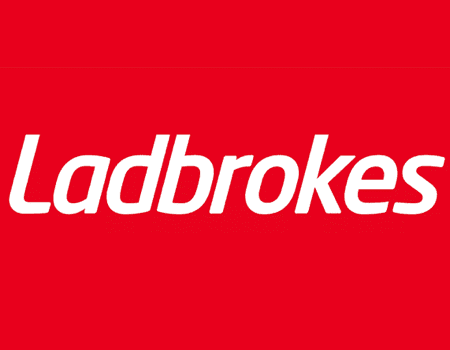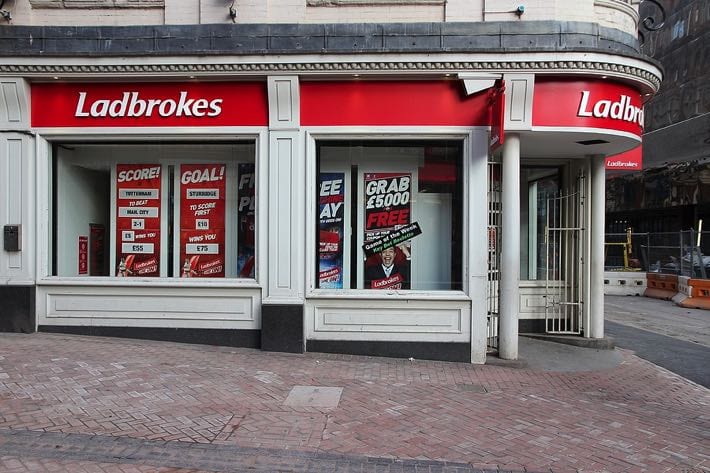 Bookmakers often have names associated with something to do with their past. Pick a famous one and there is a good chance that there is some sort of link with someone from the company’s formative years in the name. The launch of white label betting sites changed all of that, with names instead being more closely associated with something that would make them attractive to punters. If you were opening a betting site nowadays, what would you choose to name it? You would probably opt for a name such as ‘Power Bet’ or ‘Lightening Wager’.
Bookmakers often have names associated with something to do with their past. Pick a famous one and there is a good chance that there is some sort of link with someone from the company’s formative years in the name. The launch of white label betting sites changed all of that, with names instead being more closely associated with something that would make them attractive to punters. If you were opening a betting site nowadays, what would you choose to name it? You would probably opt for a name such as ‘Power Bet’ or ‘Lightening Wager’.
One of the words that you’d almost certainly want to steer clear of would be ‘broke’, given the obvious connotations associated with it. You might also be keen to avoid having something within the title that genders your offering, like ‘lad’ or ‘bird’. It is entirely reasonable, therefore, for people to wonder where it is that the world-famous bookmaker, Ladbrokes, got its name, given the fact that it sounds a lot like you’re saying that a lad is broke. In truth, it is just completely coincidental that those two words make up the name of the bookie, which as been around for hundreds of years.
The Origins of Ladbrokes
In 1886, Messrs Schwind and Pennington found themselves working as commission agents for horses trained in Warwickshire. The horse racing industry was a growing one at the time, so the pair figured that there was plenty of money to be made out of horses that had been trained up before beginning a racing career. In essence, Pennington was actually the company’s only client in the first few years of its existence, looking after his own horses. Things remained this way for a number of years, but it was all about to change when Arthur Bendir was brought on board.
Bendir took the decision to give the company a new name, based on the title of the venue where the horses had been trained. That was Ladbroke Hall, so Bendir chose to rename the business as ‘Ladbrokes’, which Schwind and Pennington were more than happy to go along with. Bendir was the brains behind the operation, offering a business dynamic that had been lacking until that point. He saw a sign for Ladbroke Hall, liked the sound of it and then chose to rebrand the business from there. Not only that, he also changed the emphasis of the company.
Having previously been a company that trained and backed horses, Bendir decided that there was much more money to be made from offering people the chance to place bets on horses. Gambling was a growing business in the United Kingdom at the time, albeit one that was still being done in a clandestine manner in most cases. Bendir realised that one of the best ways to help the company make a name for itself whilst also being able to remain on the right side of the law was by targeting the British aristocracy and upper classes, aiming for the richest clientele.
The Move to London

When Bendir decided to move the business to London, a decision had to be taken about where to be based. Initially, a premises came up on the Strand, with Ladbrokes moving in and business made from the clients of gentlemen’s clubs such as the Carlton and Whites. The client base was built rapidly, so in 1906 a move was made to take the operation to Hanover Square. They remained there for the following seven years, continuing to offer their services to a limited and exclusive client list, becoming well-known enough for them to afford another move.
This time, in 1913, the fledgling business opened up on Old Burlington Street in Mayfair. The gentlemen’s clubs of the St. James’ area of London continued to be where Ladbrokes drew their clientele from, which remained the case right the way through until 1956. One of the things that helped the company to stand out from its competitors, other than its exclusive nature, was the fact that one of its principle representatives on the racecourses was a woman. Helen Vernet had joined Ladbrokes in 1919, becoming a partner in the firm nine years later.
The Stein Family Get Involved
In the wake of the Second World War, it was clear that Ladbrokes’ fortunes were in decline. That was largely thanks to the austere economic climate of the time, but the fact that its exclusive client base was dwindling didn’t help. Even so, there was a reluctance from those involved to change the specialist approach that they had opted for throughout the business’ existence. Instead, new blood was needed to take Ladbrokes forward and to develop it into one that was able to earn the business of more than just the rich gentlemen of London’s private clubs.
Mark Stein and his nephew, Cyril Stein, bought Ladbrokes in 1956 for a rumoured fee of £100,000. They began to move Ladbrokes away from being an exclusive bookmaker for the richest people around, instead opening it up to others. That proved to be a genius decision, with the government passing the Betting and Gaming Act in 1960, which said that betting shops would be legalised from the following year. Stein immediately used the dividends from the traditional aspects of the business in order to open a chain of betting shops throughout London.
Going Public

The Steins knew that they were in a position to be able to grow Ladbrokes beyond just a bookmaker. As part of a plan to grow the company, the business made a stake in Malta’s Dragonara Palace, a casino and hotel that opened its first phase in 1964. Three years later and another big decision was made: Ladbrokes was to be floated on the London Stock Exchange. From that moment on, the business continued to grow apace, with the retail side of things going from having fewer than 50 shops to more than 1,000 between 1967 and 1973.
At the same time as the bookmakers shops grew, Ladbrokes also diversified into other areas like hotels, thanks to the link to the Dragonara brand. Bingo clubs, holiday centres and even real estate investments were all made, making it one of the biggest betting businesses in the country. The growth continued with the bookmakers shops, too. In 1973, Ladbrokes paid Terry Rogers £250,000 and gave him 100,000 shares in order to take on the 53 shops that had been part of his chain of betting shops. The growth showed no sign of stopping, even when scandal hit.
Further Acquisitions
Ladbrokes made the decision to move into racecourse management in 1975, buying Lingfield Park. A year later and Perry Barr Stadium and Totalisators and Greyhound Holdings were added to the pile, with the latter ensuring that Brough Park, Crayford & Bexleyheath, Leeds, Gosforth, Willenhall and Monmore all joined the Ladbrokes family. A former member of the Greyhound Racing Association, Arthur Aldridge, was also brought on board and the Racing Director for the company. It seemed as though everything was on the up, only for scandal to rock the business.
It emerged that there had been illegal marketing schemes taking place at the casinos in London. A police offer had been bribed in order to say who the high rollers were at competing casinos in the capital, with Ladbrokes then targeting them to win their business. Four of the venues owned by Ladbrokes had to be closed, which was roughly a quarter of the take-home. It didn’t stop the company from continuing to expand, however, buying Texas Homecare, the chain of DIY Stores, in 1986 and then Hilton International a year later, before Vernons Football Pools were bought in 1989.
Stein Retires & Ladbrokes Changes

You will notice that, throughout all of this, Ladbrokes has remained Ladbrokes. The name, first come up with by Arthur Bendir, has remained in place for the bookmaker in spite of all of the other changes going on around it. When Stein chose to retire in 1994, coming under pressure from investors in the wake of losses and rising debts, that remained the case. A focus on the core areas of gambling and hotels was put in place, with Texas Homecare sold to Sainsbury’s for £290 million in 1995. The commercial and residential real estate was also pared back, dropping to around £70 million by 1997.
One of the biggest changes, as well as the largest of threats to Ladbrokes as a name, was mooted in 1998 when Ladbrokes attempted to buy Coral from Bass plc for £363 million. It was only when the Monopolies and Mergers Commission decided that it was anti-competitive that the deal fell through. It did eventually happen, of course, when the Competition and Markets Authority decided that Ladbrokes could buy Gala Coral Group if 350 to 400 shops were sold. They duly were and Ladbrokes plc became Ladbrokes Coral Group plc in July of 2016.
The Modern Era
In December 2017, GVC Holdings reaching an agreement to buy Ladbrokes Coral for a deal worth around £4 billion. Many wondered whether that would be the end of Ladbrokes being called Ladbrokes, but when you pay close to £4 billion for something you do so with the knowledge of how important the brand name is. Having survived for more than a hundred years, growing and developing into one of the biggest companies in the world, it is perhaps no surprise that Ladbrokes remained its own entity. Even when GVC Holdings became Entain, Ladbrokes remained.
If the company was created in the modern era, there is next to no chance that the words ‘lad’ and ‘broke’ would be allowed to remain in its title. Perhaps even the likes of Cyril Stein toyed with changing it, but they will have known that there was no getting away from the fact that Ladbrokes was a name and a brand that people recognised and trusted. That was always going to be worth a huge amount more than any possible, incorrect, connotations that people might make. Ladbrokes endured and is likely to continue to do so for many years to come.